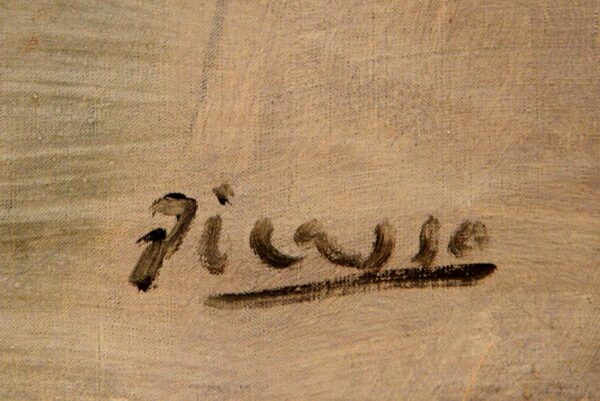
The signature on a document, work of art or other object is a mark of origination: A sign that attests to the individual responsible for the existence of a thing. Although it’s common for a signature to take the form of an autograph — that’s one of Pablo Picasso’s, above — there are many other possibilities. In the pre-modern world, kings kept a great seal under close guard. Pressing it into warm wax reproduced its unique likeness and provided proof of the royal origin of a document. Today, fingerprints, iris-scans and DNA analysis all serve as signatures of a sort, helping to establish identity, ownership and authenticity.
In the world of wine, signatures take two forms. There is the man-made kind consisting of trademarks, appellation laws and labelling requirements. Then there are the signatures created by nature. These are far less definable and precise, but one could argue that natural signatures are the most important since they are the main reason the man-made ones are necessary. Natural signatures can be neatly organized into the what signature, the where signature and the when signature.
Each individual grape varietal has a unique physiognomy and chemical makeup. This profile provides a baseline for what flavors, aromas, and textures are possible in the wine made from it. Some varietals are more readily identifiable than others because they are more familiar to most wine drinkers. Think of varietal character as the what signature.
It’s been known since ancient times that the same grape variety grown in different places often shows markedly different character. It’s one of the reasons Chardonnay from California’s warm, sunny spaces is generally easily distinguished from Chardonnay originating under the cool, overcast skies of Chablis in northeast France. Soils, too, play a key role. Place marks wine with a where signature.
Climate, it’s said, is what you expect, while weather is what you get. Since no one growing season is identical to another, the very same wines from the very same places will naturally vary from year to year – sometimes dramatically. Vintage variation is wine’s when signature.
Just as in the world of autographs, some of wine’s natural signatures are less legible than others. But that’s no reason not to learn to read.
This week in the wine corner . . .
THURSDAY SEPTEMBER 13, 3-6 PM – SIGN HERE,PLEASE
• 2017 Domaine Pépiére “La Pépie” Muscadet Sèvre et Maine Sur Lie, $16.95 #tastethewhere
• 2015 Guimaro Ribeira Sacra Tinto, $21.95 #tastethewhen
• 2016 Del Prete Negroamaro Anne, $17.95 #tastethewhat
FRIDAY SEPTEMBER 14, 3-6 PM – SIGN ME UP
• 2015 Benito Santos Godello, $17.95 #fruitsitsownhorn
• 2016 Clos du Tue-Boeuf, “La Butte” Touraine, $22.95 #naturalwonder
• 2013 Conti Nuvoli Superiore Barbera d’Asti, $21.95 #woodsyone
-Stephen Meuse